Imagine a majestic moose, its towering antlers proudly displayed against the backdrop of a serene forest. But have you ever wondered about the soft, velvety covering that adorns those magnificent antlers? This is none other than the velvet – a unique feature of moose that undergoes a fascinating transformation. In this article, we will delve into the world of moose shedding velvet and explore its significance for these awe-inspiring creatures.
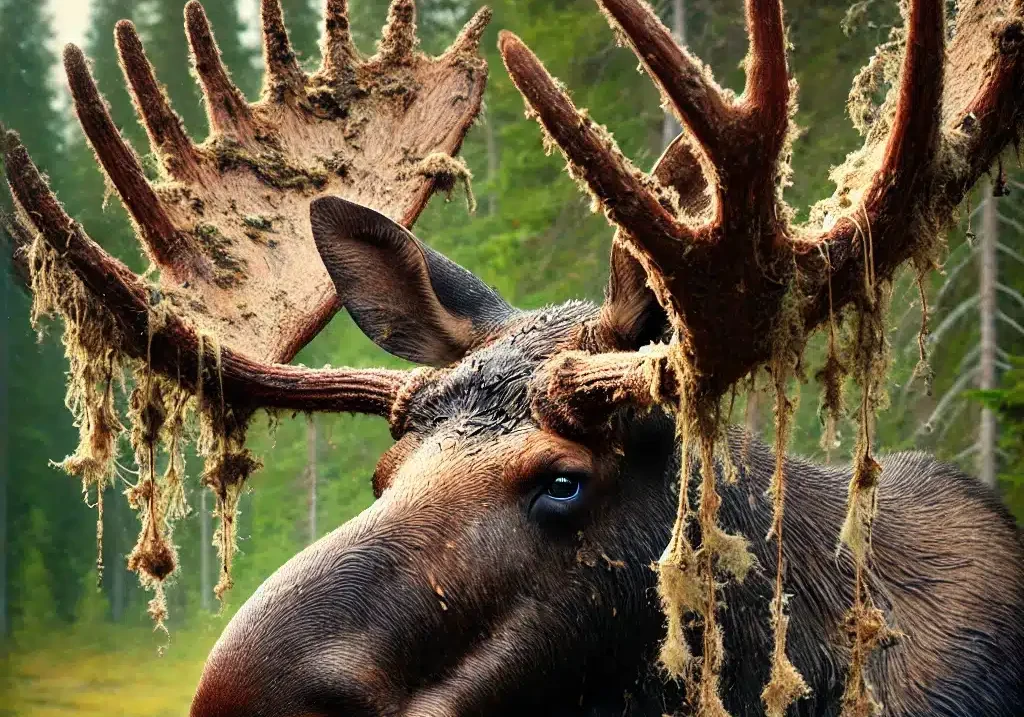
Moose, those iconic residents of North America’s wilderness, undergo an extraordinary process known as shedding velvet. Velvet refers to the soft skin covering developing antlers that emerge during their growth phase.
It acts as a protective sheath, nurturing and nourishing the growing antler beneath. During this period, moose antlers are encased in a rich blood vessel supply that delivers nutrients and oxygen to support their growth.
This blood-rich membrane gives the velvet its characteristic velvety texture and reddish appearance – an exquisite sight to behold! But what makes this process even more intriguing is how it eventually culminates in the shedding of this velvety covering.
Importance of Shedding Velvet for Moose
Moose shedding velvet is not merely a cosmetic phenomenon; it serves several vital purposes for these magnificent creatures. As autumn approaches and their antlers reach full size, male moose enter into rutting season – where they compete fiercely for mates. Shedding their velvet allows them to reveal their formidable weapons beneath, ensuring they are primed for dominant displays and sparring matches with rival males.
Moreover, shedding velvet signifies an important milestone in a moose’s life cycle. It marks the transition from rapid growth to the solidification of antler bone.
Once the velvet has been completely shed, the hard antlers are exposed. These provide an essential tool for male moose during mating rituals and territorial defense. Shedding velvet also allows moose to conserve energy by shedding excess weight that is no longer needed.
Explanation of Antler Growth in Moose
Moose are majestic creatures known for their awe-inspiring antlers. Antlers are bony structures that grow on the heads of male moose, known as bulls.
These magnificent appendages serve various purposes, from attracting mates to resolving disputes with other males. Antler growth is a fascinating process that occurs annually in moose.
It all starts when the bull reaches maturity at around two years old. In the springtime, hormonal changes trigger the growth of new antlers from the pedicles, which are bony protrusions on top of their skulls.
From this point forward, the growth rate is truly remarkable. During this phase, antlers are covered in a soft and fuzzy Velvet layer.
This velvety coating is rich in blood vessels that deliver essential nutrients to support rapid antler growth. As summer progresses and the antlers continue to develop, they become larger and more complex in structure.
Role of Velvet in Antler Development
The velvet covering on moose antlers plays a crucial role throughout development. This specialized skin protects the growing bone beneath it while ensuring an adequate blood supply for nourishment.
As antlers grow more intricate, they require an abundant supply of minerals and proteins for proper formation. The velvet is a conduit for these vital nutrients by directly linking blood vessels and developing bones.
Additionally, velvet aids in maintaining optimal temperature regulation within the sensitive growing tissues of antlers. Since these structures are highly vascularized during their growth phase, proper heat dissipation is crucial to prevent damage or deformities.
However, once autumn rolls around and mating season approaches, moose have no use for those impressive velvety antlers anymore. That’s when the next phase begins: the velvet shedding process.
Velvet Formation
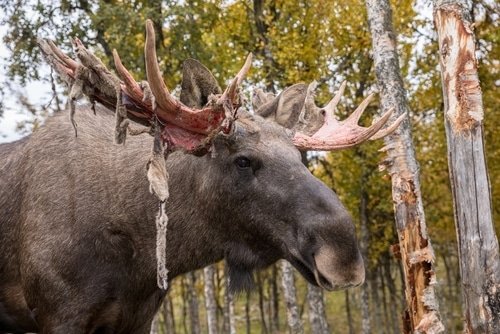
Velvet formation on moose antlers
When it comes to moose shedding velvet, the process of velvet formation is fascinating. It all begins when the moose’s antlers start growing in spring.
At this stage, the antlers are covered in a soft, fuzzy skin called velvet. This velvet is rich in blood vessels and nerve endings, providing nourishment and sensitivity to the developing antlers.
As the antlers grow, the velvet works like a protective sheath, supplying vital nutrients for their development. It’s almost like a cozy blanket for the antlers!
Underneath this velvety layer, bone cells rapidly multiply and mineralize. Hormones and nutrients circulating within the moose’s body drive this growth.
The unique thing about velvet formation is that it occurs incredibly quickly. Moose have been known to grow up to an inch of antler daily during peak growth periods!
As we can imagine, this rapid growth requires substantial energy and resources from the moose. Therefore, these majestic creatures must maintain a healthy diet during this time.
Factors influencing the growth and quality of velvet
Various factors influence how well and fast a moose’s velvet grows on its antlers. One major factor is age – younger males tend to have faster-growing and higher-quality velvet than older ones. Additionally, genetics play a role; some individuals are blessed with better genes for impressive antler growth.
Nutrition also plays a critical role in determining the quality of velvet. Moose require ample protein-rich food sources like leaves, twigs, bark, and aquatic vegetation to support optimal growth.
Adequate nutrition ensures enough resources are available for rapid cell proliferation within the growing antler structure. Environmental conditions can also impact how well moose shed velvet and the quality of their antlers.
In regions with harsh winters or limited food availability, moose may face challenges in achieving optimal velvet growth. Factors like temperature, moisture, and access to mineral-rich food sources affect how well moose thrive during the velvet shedding season.
Understanding the intricate process of velvet formation and recognizing the influential factors allows us to appreciate the efforts that go into growing a magnificent set of antlers. A healthy moose with well-nourished antlers covered in plush velvet is a sight!
Velvet Shedding Process
The Perfect Timing: When Velvet Meets the Forest Floor
When it comes to velvet shedding in moose, timing is everything. This remarkable process typically occurs during late summer or early fall, although the exact timing may vary depending on geographic location and individual moose characteristics. As the days grow shorter and the temperatures drop, moose prepare for this significant event in their annual antler cycle.
During this time, moose experience a surge of hormones that signal the beginning of velvet shedding. The velvet-covered antlers that have served them well throughout spring and summer now become ready for renewal.
As if sensing something in the air, moose become more restless and start rubbing their antlers against various surfaces like tree trunks or shrubs. This behavior helps them relieve any itching caused by the velvet’s drying process but also aids in removing loose pieces of velvet.
Unveiling a New Chapter: Physical Changes During Velvet Shedding
As velvet shedding progresses, fascinating physical changes occur within a moose’s antlers. The blood vessels that once nourished the growing antlers gradually constrict, reducing blood flow to those areas covered by velvet. This decrease in blood supply causes a calcification process known as osteogenesis.
Simultaneously, specialized cells called osteoclasts work diligently to resorb bone tissue from within the antlers. Through this resorption process, essential minerals stored within the bone are reabsorbed into their body for future use.
As a result, small cracks appear in the bony core of each antler section covered by velvet. The reduced blood flow and osteogenesis combination weakens the connection between each section and its surrounding skin or pedicle base.
Eventually, these weakened connections give way under pressure from rubbing or other physical activities, leading to velvet shedding. Once shed, the beautifully polished antlers are revealed, marking the transition from one chapter in a moose’s life to the next.
Shedding Behavior and Rituals
Description of how moose prepare for velvet shedding
When it comes to shedding their velvet, moose are quite meticulous in their preparations. As shedding approaches, these magnificent creatures exhibit certain behaviors indicating imminent shedding. One noticeable behavior is their increased grooming routine.
Moose will spend hours carefully cleaning and grooming their antlers, ensuring they are free from any debris or excess blood that might interfere with the smooth velvet shedding. It’s almost as if they understand the significance of this transition and want to ensure a seamless process.
In addition to grooming, moose also become more sensitive during this period. They develop a heightened awareness of their surroundings and often display irritability or restlessness.
This heightened sensitivity is believed to be an automatic response, a way for them to protect themselves during this vulnerable phase of moose antler care. So, if you encounter a moose during its velvet-shedding season, give them plenty of space and avoid sudden movements that could startle them.
Social interactions and dominance displays during this period
The period leading up to velvet shedding in moose is significant for individual moose and is crucial in social dynamics among these majestic creatures. During this time, male moose engage in dominance displays as they compete for mating opportunities and establish their rank within the herd hierarchy. They showcase their antlers prominently by holding their heads high while vocalizing with deep grunts or rattling antlers against nearby trees.
These displays are impressive visual spectacles intended to intimidate rivals and attract females. Antlers’ size, shape, and branching pattern are vital in determining dominance among males competing for mates.
Powerful individuals with larger antlers often hold higher positions within the hierarchy and have increased access to desirable females during the breeding season. While these displays are primarily meant to establish dominance, they also allow moose to gauge the competition and assess potential rivals.
It’s like a grand showdown in the wild, where strength, agility, and antler size take center stage. So, the next time you witness this mesmerizing performance of clashing antlers and echoing grunts during velvet shedding season, appreciate the intricate social dynamics among these majestic creatures.
Velvet Utilization by Other Animals
Shed Velvet for Scavengers and Insects
When moose shed their velvet, it may seem like a simple discard of a bodily adornment. However, the shed velvet plays a crucial ecological role by providing sustenance and habitat for various scavengers and insects. As the velvet contains a wealth of nutrients, it becomes an enticing food source for opportunistic animals in the wild.
Scavengers like foxes, coyotes, and even smaller mammals like mice and squirrels eagerly feast upon this protein-rich delicacy. The shed Velvet provides essential nourishment, especially when food is scarce in their environment.
Not only do scavengers benefit from moose shedding their velvet, but insects also play a vital role in utilizing this natural resource. Beetles, flies, and other insects are attracted to the strong scent of the decomposing shed velvet.
They lay eggs on it or use it as shelter while they complete their life cycle. This symbiotic relationship between moose shedding their velvet and insects allows these creatures to thrive within an ecosystem that relies on decomposition processes for nutrient cycling.
Impact on Ecosystem Dynamics
Moose shedding their velvet has broader implications beyond mere nutrition for scavengers and habitat for insects. It also influences ecosystem dynamics in several ways.
Firstly, when large amounts of shed velvet accumulate in an area over time, they contribute organic matter to the soil through decomposition. This enriches the soil’s nutrient content and promotes plant growth in those specific locations.
Moreover, shed velvet can attract larger predators to areas where prey species gather or leave remnants behind. Animals like wolves or bears may frequent these sites to scavenge on leftover velvet or monitor potential prey movements.
Overall, moose shedding their velvet provides sustenance to different organisms and acts as a catalyst for ecological interactions and the redistribution of nutrients within ecosystems. Understanding and appreciating the multifaceted impact of moose antler care and velvet shedding in moose can provide valuable insights into the intricate web of life in our natural world.
Velvet Harvesting by Humans
Cultural Practices Involving Harvested Shed Velvet
In certain cultures, shedding velvet from moose antlers holds significant cultural value. Traditional practices involving harvested shed velvet vary across different regions.
For instance, some indigenous communities view the velvet as a valuable resource with medicinal properties and incorporate it into their traditional medicine. They believe that consuming or applying velvet can enhance strength and vitality.
Harvesting shed velvet is an important ritual in these cultures, often carried out with great reverence and respect for the animal. Additionally, shed velvet has found its place in various crafts and artistic endeavors.
Some artisans utilize this unique material to create exquisite jewelry, carvings, or even decorative items like lampshades. Shed velvet’s intricate texture and coloration lend themselves well to these creative pursuits, making it highly sought-after by collectors and enthusiasts.
Ethical Considerations Surrounding the Trade in Shed Velvet
While the use of shed velvet has cultural significance, ethical considerations must be considered when engaging in the trade of this natural resource. Responsible harvesting ensures that moose populations are not negatively impacted by excessive harvesting or poaching for their antlers or shed velvet. R is crucial. Responsible harvesting involves obtaining shed Velvet from sustainable sources such as naturally fallen antlers or those collected during regulated hunting seasons where populations are carefully managed.
Strict regulations are often implemented to prevent overexploitation and protect wildlife populations from exploitation for commercial gains. Furthermore, ethical concerns also extend to ensuring fair compensation for Indigenous communities that rely on Shed Velvet as part of their cultural practices.
Respecting intellectual property rights and supporting local economies is imperative in fostering a sustainable trade system that benefits all stakeholders. By striking a balance between cultural appreciation, environmental conservation efforts, and ethical trade practices, we can ensure the continued availability of shed velvet as a valuable resource while safeguarding the welfare of moose populations and their habitats.
The cultural practices surrounding harvested shed velvet highlight its significance in various communities. Whether used for traditional medicine or transformed into unique craftsmanship, shed velvet carries cultural and artistic value.
However, it is crucial to approach the trade-in shed velvet ethically, ensuring responsible sourcing practices and fair compensation to Indigenous communities. By doing so, we can preserve this remarkable material while upholding environmental conservation efforts and respecting the well-being of moose populations.
Velvet Preservation Techniques
Methods used to preserve shed velvet for display or crafts
When it comes to preserving shed Velvet for display or crafting purposes, there are a few tried and true methods that enthusiasts and collectors rely on. One popular technique is freeze-drying. This involves carefully freezing the shed velvet and subjecting it to a low-pressure vacuum that removes moisture without causing significant damage.
Freeze-drying preserves the velvet’s texture and appearance and helps prevent mold or decay. Another method is tanning, which involves treating the shed velvet with chemicals that stabilize the material and prevent decomposition.
The tanning process preserves the shed Velvet and enhances its durability, making it suitable for various applications such as creating jewelry or decorative items. Tanned velvet can be dyed in different colors if desired, allowing for creative flexibility in crafts.
Explanation on how to properly handle, clean, and store shed velvet
Proper handling of shed moose, antlers’ velvet, is crucial to ensure its preservation. When handling, it’s important to wear gloves made of non-reactive materials like nitrile or latex-free rubber to avoid transferring oils from your skin onto the delicate surface of the velvet. Additionally, avoid excessive touching or rubbing, which could cause damage.
Cleaning shed moose antlers and velvet should be done with utmost care. Gently remove any debris clinging to the surface using a soft brush or cloth.
If there are stubborn stains or dirt marks, a mild solution of warm water and gentle soap can be used sparingly with a soft cloth. Always dab rather than rub when cleaning so as not to disturb or fray the fibers.
As for storage, shedding moose antlers velvet should be kept in a cool and dry environment away from direct sunlight, which can cause fading over time. It’s recommended to store velvet in acid-free tissue paper or cloth to prevent any potential chemical interactions that may affect its texture or color.
Air-tight containers or bags can protect the velvet from dust and moisture, but it’s essential to check and ensure no mold or mildew is forming periodically. By following these preservation techniques and proper handling procedures, shed moose antler’s velvet can be maintained in its original beauty and integrity, allowing for its use in display, crafts, or even as a meaningful memento of nature’s wonders.
Interesting Facts About Moose Shedding Their Velvet
Unusual Cases or Behaviors Related to the Shedding Process
Did you know moose shedding their velvet can sometimes lead to extraordinary occurrences? In rare instances, some moose have been observed engaging in what can only be described as “antler duels.” These duels involve two moose whose antlers become entangled during the shedding process. It’s like they’re playing a game of antler twister!
This peculiar behavior might seem comical, but it serves a serious purpose. By tangling their antlers, these moose are helping each other shed their velvet more efficiently.
It’s almost like they’re saying, “Hey buddy, let me give you a hand with that.” Nature never ceases to amaze us! Another intriguing fact is that moose occasionally display distinctive behaviors during the shedding period.
One such behavior is known as “rubbing fever.” Imagine a moose frantically rubbing its antlers against trees and shrubs with immense vigor. This energetic rubbing helps remove the hanging strips of velvet and spontaneously acts as self-care.
The rubbing stimulates blood flow and prevents infections or parasites that may inhabit the velvet during its growth phase. So next time you encounter a moose amid its rubbing fever, remember it’s just practicing good hygiene!
Lesser-Known Details About Physiological Changes
Behind all the fascinating behaviors lies an intricate web of physiological changes within a moose during velvet shedding. As the velvet detaches velvet antlers, blood vessels constrict gradually, reducing blood flow into this once-nurtured tissue. As a result, mineral-rich nutrients are cut off from reaching these soft coatings, leading to their eventual demise.
Furthermore, when studying the composition of moose velvet, researchers discovered an astonishing fact—it contains high levels of keratin. Keratin is a structural protein found in various parts of the animal kingdom, including human hair and nails.
This finding further emphasizes the connection between moose antlers and our bodily structures. So, if you ever admire a magnificent set of moose antlers adorned with shed velvet, remember Velveteneath. Its grandeur lies a protein akin to what composes our hair and nails.
These lesser-known physiological details and extraordinary behaviors during velvet shedding highlight the remarkable adaptations that have evolved in moose over time. It’s an intricate dance between nature’s design and these magnificent creatures’ instinctual responses.
Conclusion
Throughout this detailed exploration of moose shedding velvet, we have delved into the fascinating world of antler growth and the significance of velvet in this velvet. We have learned about the intricate formation of velvet on moose aVelvet and how factors such as nutrition and genetics play a role in its development.
Additionally, we examined the timing and duration of the shedding process and the behavioral changes that occurred during this period. One intriguing aspect of our discussion is the utilization of shed velvets by other velvets in their ecosystems.
Scavengers and insects benefit from this natural resource, creating an interesting ecological dynamic. Furthermore, humans have engaged in cultural practices involving harvested shed velvet, raising ethical considerations surrounding its trade.
We also explored techniques for preserving shed Velvet for display or crafts, ensuring its longevity. Moose shedding their velvet is a remarkable natural phenomenon with ecological and cultural significance.
Understanding moose antler care and shedding behavior allows us to appreciate the intricacies of nature’s design. So, next time you encounter a magnificent moose with velvety antlers during its shedding season, take a moment to reflect on the beauty and importance behind this transient phase—an ode to nature’s perpetual cycle of renewal and transformation.


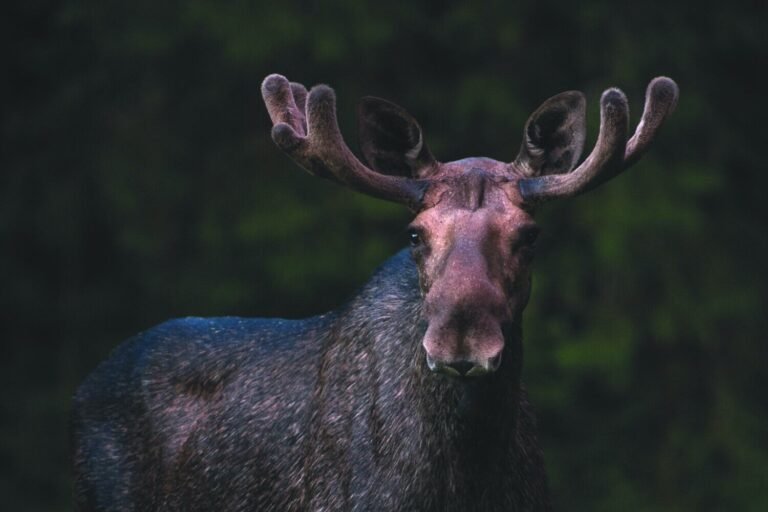
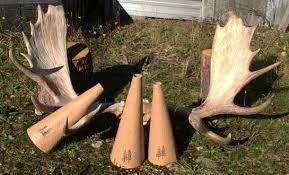

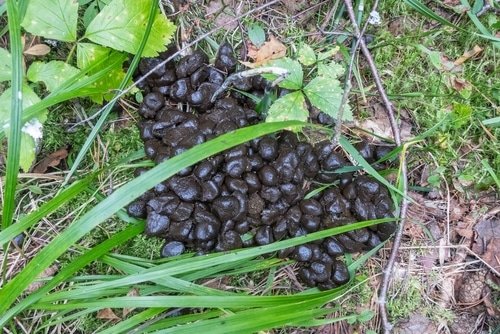
For the reason that the admin of this site is working, no uncertainty very quickly it will be renowned, due to its quality contents.
A few of these glasses (e.g.
This system was perfected in 13th century Venice.
By 1838, the Cherokee had run out of legal options in resisting elimination.
I’ve learned some important things via your post. I’d personally also like to say that there may be a situation that you will obtain a loan and never need a co-signer such as a Fed Student Aid Loan. In case you are getting financing through a regular bank then you need to be prepared to have a co-signer ready to help you. The lenders will probably base their very own decision using a few elements but the greatest will be your credit ratings. There are some loan merchants that will additionally look at your work history and make a decision based on that but in almost all cases it will depend on your scores.
Having read this I believed it was rather informative. I appreciate you finding the time and energy to put this short article together. I once again find myself spending way too much time both reading and posting comments. But so what, it was still worth it.
Good blog! I truly love how it is easy on my eyes and the data are well written. I’m wondering how I could be notified when a new post has been made. I’ve subscribed to your RSS feed which must do the trick! Have a great day!
I found your link through an online forum – my lucky day. Your site is exactly what i was looking for!
Good day! I simply would like to offer you a huge thumbs up for your excellent info you’ve got here on this post. I’ll be returning to your site for more soon.
Oh my goodness! an excellent post dude. Thanks a ton Nevertheless I am experiencing problem with ur rss . Do not know why Cannot enroll in it. Will there be everyone getting identical rss difficulty? Anyone who knows kindly respond. Thnkx
Heya this is a good post. I’m going to e-mail this to my friends. I came on this while exploring on bing I’ll be sure to come back. thanks for sharing.
The electronic cigarette uses a battery and a small heating component the vaporize the e-liquid. This vapor can then be inhaled and exhaled
I visited a lot of website but I conceive this one holds something special in it.
What’s Going down i’m new to this, I stumbled upon this I have discovered It positively useful and it has aided me out loads. I’m hoping to give a contribution & help different users like its aided me. Good job.
This could be the correct blog for would like to learn about this topic. You already know a great deal of its almost hard to argue together with you (not too I actually would want…HaHa). You certainly put a fresh spin with a topic thats been discussed for some time. Wonderful stuff, just wonderful!
Wonderful goods from you, man. I’ve understand your stuff previous to and you’re just extremely magnificent. I actually like what you have acquired here, really like what you are saying and the way in which you say it. You make it entertaining and you still take care of to keep it wise. I can not wait to read much more from you. This is actually a wonderful web site.
I am glad to be a visitor of this utter site ! , thankyou for this rare information! .
You ought to be a part of a contest for one of the most useful blogs on the internet. I am going to recommend this site!
I think other website owners should take this internet site as an model, very clean and wonderful user friendly design .
I precisely wished to appreciate you again. I am not sure what I would’ve worked on in the absence of those techniques provided by you concerning that industry. This has been the scary case in my opinion, but taking note of the skilled avenue you processed it took me to jump over contentment. I am happy for your advice and in addition hope you recognize what an amazing job you are always doing training people through the use of a web site. I’m certain you haven’t got to know any of us.
i love to watch NCIS, the story is great and i love the special effects too”
Hello there! I know this is somewhat off topic but I was wondering which blog platform are you using for this site? I’m getting tired of WordPress because I’ve had problems with hackers and I’m looking at options for another platform. I would be fantastic if you could point me in the direction of a good platform.
Its such as you read my mind! You appear to understand a lot about this, like you wrote the e-book in it or something. I believe that you simply could do with a few to force the message house a bit, however other than that, this is wonderful blog. A great read. I’ll certainly be back.
when i was a kid, i love to receive an assortment of birthday presents like teddy bears and mechanical toys..
Good info. Lucky me I came across your site by accident (stumbleupon). I’ve book marked it for later!
what i can say is that abortion is a sin and it should be deemed illegal by all means’
Hello! I merely would wish to supply a massive thumbs up with the excellent info you’ve got here with this post. We are coming back to your site to get more detailed soon.
Hello there, I discovered your site by the use of Google even as looking for a similar topic, your web site came up, it seems great. I have bookmarked it in my google bookmarks.
Hi there, I discovered your website by way of Google while searching for a comparable topic, your website came up, it looks good. I’ve bookmarked it in my google bookmarks.
Pretty nice post. I simply stumbled upon your weblog and wanted to say that I have really enjoyed surfing around your blog posts. In any case I’ll be subscribing on your rss feed and I hope you write again soon!
I am not real superb with English but I find this real easy to understand .
Some truly nice stuff on this site, I enjoy it.
The good intreguing web pages keep me returning the following repeatedly. thanks again so much.
And, as of late, paints of many colors are available to replicate the results of sun and age.
I can’t really help but admire your blog, your blog is so adorable and nice “
I not to mention my friends were actually examining the good tips and tricks on your web site then before long I had a horrible suspicion I had not thanked you for those strategies. All of the young boys appeared to be for that reason very interested to study all of them and have in actuality been loving these things. I appreciate you for truly being simply considerate and also for pick out some impressive information millions of individuals are really eager to discover. Our sincere apologies for not expressing appreciation to you earlier.
Spot up with this write-up, I honestly think this web site requirements a great deal more consideration. I’ll oftimes be once more to learn a great deal more, thank you that information.
hello!,I really like your writing very a lot! percentage we keep up a correspondence extra about your article on AOL? I need an expert on this area to unravel my problem. May be that is you! Taking a look forward to peer you.
My husband and i got quite happy Edward managed to round up his investigation through the precious recommendations he had when using the weblog. It is now and again perplexing to just be offering secrets and techniques that many most people might have been trying to sell. And we remember we have got the blog owner to give thanks to because of that. The entire illustrations you have made, the easy site menu, the relationships you make it possible to foster – it is most terrific, and it is helping our son and us consider that this concept is awesome, which is tremendously serious. Thanks for everything!
This is actually intriguing, You’re an exceptionally effective blogger. I’ve enrolled with your feed and furthermore , look ahead to reading your marvelous write-ups. What’s more, We have shared your internet site inside our social networks.
I happen to be commenting to make you know of the extraordinary experience my friend’s princess had reading through your web site. She learned many pieces, most notably what it is like to possess a great coaching mood to have other individuals really easily understand selected problematic topics. You truly did more than visitors’ expected results. I appreciate you for providing these invaluable, trusted, edifying and even fun guidance on this topic to Sandra.
Good day. i am doing research right now and your blog really helped me”
The last problem with the film occurs with Morgan Freemans’s lack of screen time making his character seem very unimportant.
There’s certainly a great deal to learn about this subject. I love all the points you’ve made.
As a Newbie, I am constantly searching online for articles that can aid me. Thank you
You really should take part in a contest for one of the best blogs on the web. Let me suggest this web site!
An impressive share, I just with all this onto a colleague who was performing a little analysis for this. Anf the husband the fact is bought me breakfast simply because I discovered it for him.. smile. So permit me to reword that: Thnx for that treat! But yeah Thnkx for spending time to go over this, I find myself strongly about it and enjoy reading on this topic. Whenever possible, as you become expertise, could you mind updating your website to comprehend details? It’s extremely ideal for me. Huge thumb up for this short article!
I’ve been gone for some time, but now I remember why I used to love this blog. Thank you, I’ll try and check back more often. How often do you update your site?
Very educational post. Your current Weblog style is awesome as well!
I would like to point out my appreciation for your generosity for visitors who need help on this theme. Your very own dedication to getting the message across ended up being astonishingly informative and have always permitted women like me to realize their pursuits. The invaluable report signifies so much a person like me and much more to my office colleagues. Regards; from each one of us.
Add to that list Michael Pena and Bridget Moynahan, the two adults among three other children whom Nantz and his men locate at the station.
so much superb information on here, : D.